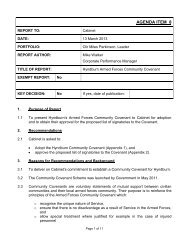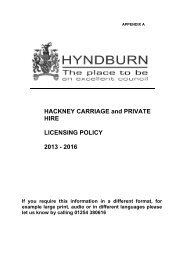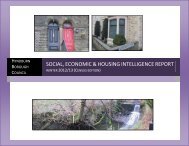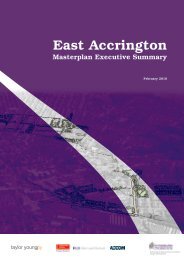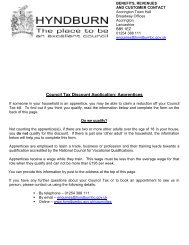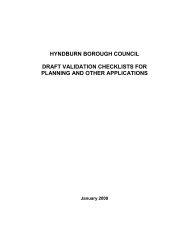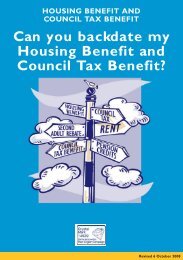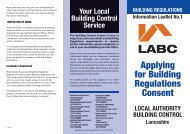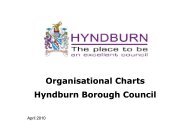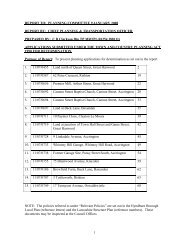A Profile of Hyndburn - 2004 - Hyndburn Borough Council
A Profile of Hyndburn - 2004 - Hyndburn Borough Council
A Profile of Hyndburn - 2004 - Hyndburn Borough Council
Create successful ePaper yourself
Turn your PDF publications into a flip-book with our unique Google optimized e-Paper software.
Provision <strong>of</strong> additional services for victims <strong>of</strong> domestic abuse is one <strong>of</strong> thesupporting people priorities for new services during <strong>2004</strong>/05.Minority ethnic groupsAccording to the 2001 census black and minority ethnic groups make up 8.3%<strong>of</strong> the borough’s population, (6,274 actual) with 96% <strong>of</strong> these being <strong>of</strong> Asianorigin. This percentage has increased considerably from the 1991 censusfigure <strong>of</strong> 5.86%. The 2001 census also shows that the majority <strong>of</strong> BMEcommunities are Muslims.Recent studies have also shown that BME communities have unique needs inrespect <strong>of</strong> religious and cultural aspects <strong>of</strong> lifestyles that do not match theexisting available housing stock. Relatively large family sizes give rise tosevere levels <strong>of</strong> overcrowding which impact on the quality <strong>of</strong> life. Other needsidentified include high levels <strong>of</strong> concealed homelessness (extended familynetwork), high levels <strong>of</strong> joblessness, which impacts on tenure choice, poorquality housing in the private sector and a high proportion <strong>of</strong> under 16 yearolds.The <strong>Hyndburn</strong> Homelessness Review 2003 found that BME households areunder represented in the homeless presentation figures when compared tothe percentage <strong>of</strong> the total population. In 2002/03 they represented 4.3% <strong>of</strong> allpresentations, against BME communities making up 8.3% <strong>of</strong> the borough’spopulation. There is also little demand from BME households for social rentedhousing, they accounted for just 1.5% <strong>of</strong> all council tenancies in 2003.The 2003 Housing Needs Survey looked specifically at the housing needs <strong>of</strong>BME households (n.b. this also included white Irish and white other). Thesurvey found that 71% <strong>of</strong> respondents live in terraced housing and overall49% <strong>of</strong> BME respondents live in 2-bed accommodation. 73.5% <strong>of</strong>respondents indicated that their homes were adequate, and <strong>of</strong> those thatstated their home was inadequate 67% cited ‘too small’ as the reason, slightlyhigher than the 62% found in the whole population.41.7% <strong>of</strong> the BME sample had a member <strong>of</strong> their household with a disabilityor long-term limiting illness, higher than the level <strong>of</strong> 33% found in the generalpopulation. (Confirmed by SP research) Difficulty walking was the maindisability, similar to the full population sample. Since physical disability andsensory impairment are more prevalent in older people, and certain long-termdisabilities have a higher prevalence amongst minority ethnic communities,this may influence the number <strong>of</strong> people who will have housing relatedsupport needs in future years.Income levels for BME households are similar to those in the wholepopulation, with 26% having an annual income <strong>of</strong> below £10,000. Of thosewishing to move, 78% said they could not afford to and nearly 20% indicatedthat they could not sell their existing home, compared to 13.6% in the generalpopulation.48



